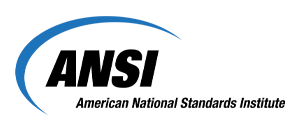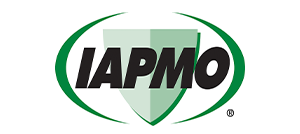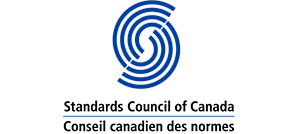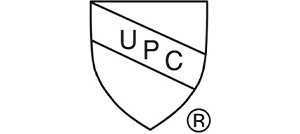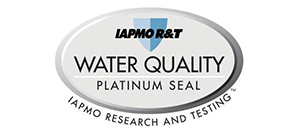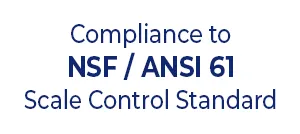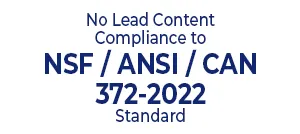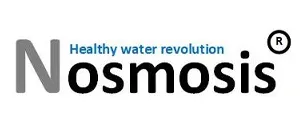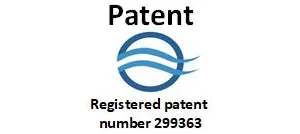Introduction: Why Water Quality Matters More Than Ever
In a world where water contamination has moved from distant headlines to suburban kitchen sinks, ensuring your family’s drinking water is safe has never been more crucial. Recent studies have revealed alarming findings: microplastics infiltrating tap water, aging infrastructure leaching lead, and “forever chemicals” like PFAS appearing in water supplies across the United States. The Environmental Protection Agency (EPA) continues to update regulations as new contaminants emerge, but municipal water treatment alone can’t guarantee optimal water quality for your home.
Bottom line: The right water filtration system isn’t just a luxury—it’s becoming an essential safeguard for your family’s health.
What Makes a Water Filter System Truly Exceptional in 2025?
To qualify as truly outstanding, today’s advanced drinking water filtration systems must meet these critical criteria:
- Comprehensive contamination removal – Effectively filters chlorine, heavy metals, volatile organic compounds (VOCs), bacteria, PFAS/”forever chemicals”, and microplastics (down to 0.01 microns or smaller)
- Mineral intelligence – Selectively preserves or adds beneficial minerals like magnesium and calcium while removing harmful contaminants
- Certification credibility – Holds independent third-party certifications from respected organizations like NSF International, meeting standards such as NSF/ANSI 42, 53, and 401
- Environmental responsibility – Operates with minimal waste water and low energy consumption
- Sensory enhancement – Significantly improves water taste and odor, encouraging increased hydration
- Advanced contaminant control – Addresses emerging threats like PFAS (now regulated by the EPA at 4 parts per trillion for PFOA and PFOS as of April 2024)
Types of Drinking Water Filter Systems: A Comprehensive Comparison
Each filtration technology has its strengths and limitations. Here’s what you need to know:
Pitcher Filters
Pros:
- Budget-friendly entry point ($20-60)
- No installation required
- Portable and refrigerator-friendly
Cons:
- Limited filtration capabilities
- Frequent filter replacements
- Small capacity requires regular refilling
- Most cannot remove toxic gases, microplastics, PFAS, or heavy metals effectively and more
Best for: Renters, students, or those seeking basic chlorine and sediment reduction.
Faucet-Mounted Filters
Pros:
- Simple installation process
- More affordable than under-sink systems ($30-80)
- No counter space required
Cons:
- Can be bulky and interfere with sink usage
- Limited filtration capability compared to more advanced systems
- May slow water flow significantly
- Some models cannot handle hot water
Best for: Households seeking improved water taste without major plumbing modifications.
Reverse Osmosis (RO) Systems
Pros:
- Effective at removing most contaminants including PFAS (up to 99%)
- NSF certified for contaminant reduction
- Comprehensive filtration of dissolved solids
Cons:
- Wastes significant water (2-4 gallons per 1 gallon filtered)
- Removes beneficial minerals along with contaminants
- Requires under-sink space and professional installation
- Higher maintenance costs over time
- Slower water flow than non-filtered faucets
Best for: Households with serious water contamination concerns who don’t mind remineralizing their water post-filtration.
Under-Sink Multi-Stage Systems
Pros:
- Excellent filtration performance without water waste
- Superior taste improvements
- Maintains good water pressure
- Most preserve beneficial minerals
- Can be customized with multiple filter stages
Cons:
- Moderate installation complexity
- Requires cabinet space
- Higher initial investment than pitchers or faucet-mounted options
- Filter replacements can be more expensive
Best for: Homeowners committed to long-term water quality who prefer filtered water on demand.
Whole-House Filtration Systems
Pros:
- Filters water for all purposes (drinking, showering, laundry, cocking and irrigation)
- Protects plumbing and appliances
- Reduces total household exposure to contaminants
- Single-point maintenance
Cons:
- Significant initial investment ($800-2,500+)
- Professional installation typically required
- Not as specialized for drinking water as point-of-use systems
- Lower micron rating than specialized drinking water systems
Best for: Homeowners with problematic water affecting multiple aspects of home life (shower, laundry, etc.).
Advanced Filtration Technologies: What’s New in 2025
The water filtration industry continues to evolve with innovative technologies addressing emerging concerns:
Microplastic Removal Capabilities
Recent research has revealed that microplastics (particles between 5mm and 100 nanometers) have infiltrated water supplies worldwide. The most effective filters use membranes with pore sizes of 0.2 microns or smaller, with ultrafiltration membranes (0.02 microns) capturing even nanoplastics. Leading systems now advertise verified microplastic removal rates of 99.9% or higher through independent laboratory testing.
PFAS/”Forever Chemicals” Filtration
With the EPA’s new drinking water standards for PFAS compounds (established April 2024), filter manufacturers have responded with enhanced capabilities. Previously, NSF P473 certification was the standard for PFAS removal, but this has now been incorporated into NSF/ANSI 53 (for carbon-based systems) and NSF/ANSI 58 (for reverse osmosis systems). Top-performing filters can now reduce PFAS to below 4 parts per trillion, meeting the latest EPA guidelines.
Mineral Control Technology
Advanced systems now offer mineral customization features that allow users to adjust the Total Dissolved Solids (TDS) levels in their water. This balance is crucial—the World Health Organization recommends a TDS range of 100-500 mg/L for optimal taste and health benefits. Mineral-intelligent systems selectively remove contaminants while preserving beneficial minerals like calcium and magnesium, which support cardiovascular health and proper hydration.
Maintenance Innovations
Smart filtration systems now include Bluetooth connectivity, mobile apps for monitoring filter life, and automated notifications for replacements. Some systems even analyze your water usage patterns to predict when filters will need changing, ensuring optimal performance without unnecessary waste.
Editor’s Top Pick for 2025: The LotusDY by TipaTech
After evaluating dozens of filtration systems, the LotusDY under-sink system stands out for its innovative approach to water purification.
Why it earned our top recommendation:
- Patented No-Smosis™ filtration technology is an innovative under-sink water purifier designed to provide healthier, personalized drinking water. It holds a patented design with global recognition.
- Ultra-fine 0.007 micron filtration effectively reduces bacteria, parasites, microplastics, and emerging contaminants
- Proprietary mineral control feature uses a smart, selective membrane that retains essential minerals, resulting in water with a TDS (Total Dissolved Solids) range between 100 to 500. Mineral levels can be adjusted using a calibration button on the filter.
- Advanced gas-trapping technology captures and contains harmful gases like radon, hydrogen sulfide, and chlorine instead of releasing them into your kitchen air.
- NSF/ANSI 42 certification validates performance claims for aesthetic contaminants
- Complies with EPA recommendations for home filtration, including the reduction of lead and harmful gas
-
Rich Antioxidant Water The Lotus DY’s uniqe worldwide patent provides negative ORP values which brings rich antioxidant water.
-
Odor & Flavor reduces gases from the water, such as Ammonia and Sulfur. It also contains active Carbon that decreases bad tastes and odors (such as Chlorine) so the water is tastier and drinkable.
-
Easy installation & maintenance The LOTUS DY has a special design
-
that makes the installation and
- Aligns with WHO guidelines for drinking water mineral content (300 mg/L TDS is ideal according to WHO)
The LotusDY system has earned recognition for addressing a key limitation of traditional RO systems—mineral loss—while maintaining superior filtration performance. Its ability to customize mineral content according to personal preferences makes it appropriate for various health needs.
Common Pitfalls to Avoid When Selecting a Water Filter
When shopping for a filtration system, watch out for these red flags:
- Uncertified performance claims – Always verify that claims are backed by credible certifications from NSF, WQA, or IAPMO
- “Pure water” marketing misconceptions – Completely demineralized water (0 TDS) lacks essential minerals and may actually be less healthful than properly mineralized water
- High wastewater ratio systems – Some systems waste 4+ gallons for every gallon filtered—an environmental and financial burden
- Excessive maintenance requirements – Systems requiring monthly filter changes can become costly and inconvenient
- Overlooking micron ratings – For effective microplastic removal, look for systems rated at 1 micron or less
- Ignoring PFAS capabilities – With new EPA regulations, PFAS removal is increasingly important; look for NSF/ANSI certification specifically for PFAS reduction
Making an Informed Decision: How to Choose the Right System for Your Home
Step 1: Test Your Water
Before investing in a filtration system, understand what’s in your water. Options include:
- Request a Consumer Confidence Report from your local water utility
- Use a home testing kit for basic contaminants
- Send a sample to a certified lab for comprehensive analysis
Step 2: Identify Your Primary Concerns
Different systems excel at removing different contaminants:
- Heavy metals → Look for NSF/ANSI 53 certification for lead reduction
- Chlorine taste/odor → NSF/ANSI 42 is sufficient
- PFAS → Ensure NSF/ANSI 53 or 58 certification for PFAS reduction
- Microplastics → Verify micron rating (0.2 microns or smaller)
- Comprehensive protection → Multi-stage systems with multiple certifications
Step 3: Consider Practical Factors
- Installation requirements (DIY vs. professional)
- Available space (under-sink, countertop, whole-house)
- Maintenance schedule and filter replacement costs
- Water usage patterns in your household
- Environmental impact (water waste, electricity usage)
Step 4: Calculate Total Cost of Ownership
Look beyond the initial purchase price to understand the true cost:
- Initial system cost
- Installation fees (if applicable)
- Filter replacement costs (annually)
- Water usage costs (for wasteful systems)
- Electricity consumption (if powered)
- Expected system lifespan
Conclusion: Investing in Your Family’s Health and Well-being
The right water filtration system is more than just a purchase—it’s an investment in your family’s health, your home’s infrastructure, and our planet’s sustainability. By choosing a system that effectively reduces contaminants while preserving beneficial minerals, you’re taking control of what goes into your body and reducing dependence on bottled water.
Whether you select the TipaTech T-18 whole house water filter and the LotusDY or another high-performing system, prioritize independent certifications, appropriate filtration technology for your specific concerns, and sustainable operation. Remember that the best system balances purification power with mineral preservation—because truly healthy water isn’t just about what’s removed, but also about what remains.
Note: Water quality concerns vary by region. Always test your water before making a final decision, and consult with a water quality professional if you have specific health concerns or complex contamination issues.


